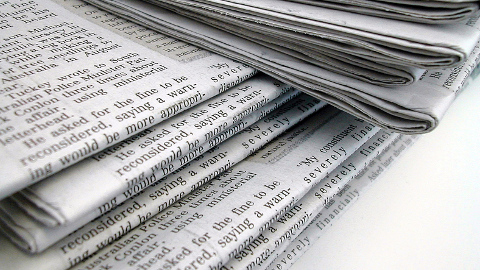![Newspapers]()
When discussing copyright, things are not as simple as strengthening or weakening copyright, unless you also specify for whom.
There are three parties involved in copyright. It is quite possible to share 98% of the problem description, like the Pirate Party does with the Association of Reporters (journalistförbundet), and yet arrive at vastly different conclusions: “weaken copyright” and “strengthen copyright”, respectively. How is this possible?
The reason is that there are three parties involved in copyright, and the relevant outcome is their relative strengths to each other. The Pirate Party wants to weaken copyright for publishers, whereas the Association of Reporters wants to strengthen copyright for writers. Both paths of action would make writers stronger in their relation to publishers.
Let’s start at the beginning:
When copyright was conceived in 1557, it was a censorship mechanism, pure and simple. Parliament let it expire in 1695, and was set under heavy lobbying to reinstate it. Not by writers, but by publishers.
This is one of copyright’s best kept lies: it was never for authors in the first place, but for the printers, publishers and distributors. The printers gathered their families on the stairs of British Parliament and basically begged for the monopoly to be reinstated, which it was in 1709.
An important point here is that nobody claimed that people wouldn’t write books without copyright. The argument was that no distributor would print books without copyright. That’s an immense difference, and it shows how copyright was created specifically for printers and distributors. In the words of Karl Fogel, this is the smoking gun of problems with copyright legislation — it is copyright in its unspun form.
Fast forward 100 years, and the balance of power between publishers and writers had become terribly lopsided. Enter Victor Hugo, who — through some fancy footwork — introduces writers’ rights into the continental copyright to balance publishers’ rights, especially in the droits morals, the noncommercial non-transferable rights.
The third party in copyright is the public, whose right of ownership is limited by the monopoly powers mostly held by the publishers.
So in order to discuss copyright in a meaningful context, it becomes important to discuss whose rights are important or problematic:
- The clearinghouses, particularly publishers. These are the ones who lobbied for 1709-style copyright in the first place, and are now reduced to bit shufflers and keeping imaginary value on the books. This bullet point also includes collecting societies, who benefit greatly from being able to tax the public for any use of work even from non-identitified or non-affiliated artists.
- The artists and creators, who are constantly trying to get their rights against (and money from) the publishers and clearinghouses. Copyright was never made for them, but they have been given some legislative breadcrumbs lately to balance the immense power of the publishers and clearinghouses.
- The public, whose access to culture and knowledge is limited by the copyright legislation, and whose rights of ownership are limited by the monopoly. The public is also the only legitimate stakeholder in this legislation. More on that in a later post.
Among these three parties, the clearinghouses have been given all the cards, and yet, they are the least important for culture. The argument that nobody would print books without copyright should have no bearing on today’s legislation, as nothing needs to be printed for culture and knowledge to be disseminated today.
It is not unreasonable in the slightest to work politically for the clearinghouses’ rights to be weakened in relation to those of the artist. This is a view we share with everybody but the copyright industry, and this is why we are in agreement with the Association of Reporters (and others) on everything but the conclusion of the specific legislative wording that needs to change.





 Det är Pentalobe som Apple använder till iPhone 4.
Det är Pentalobe som Apple använder till iPhone 4.




